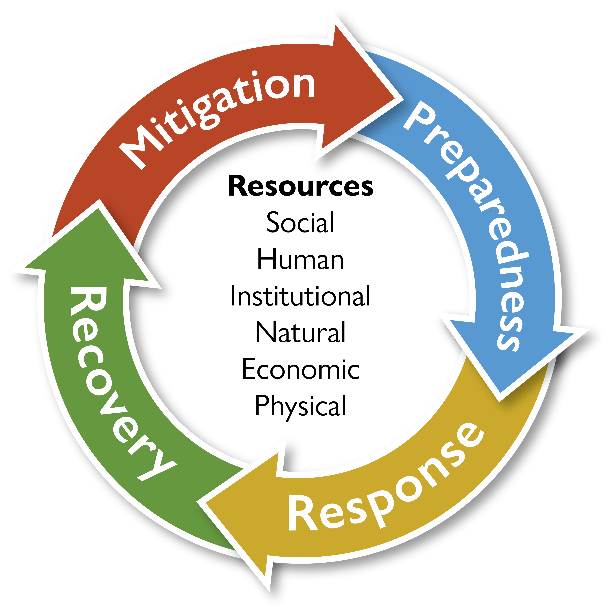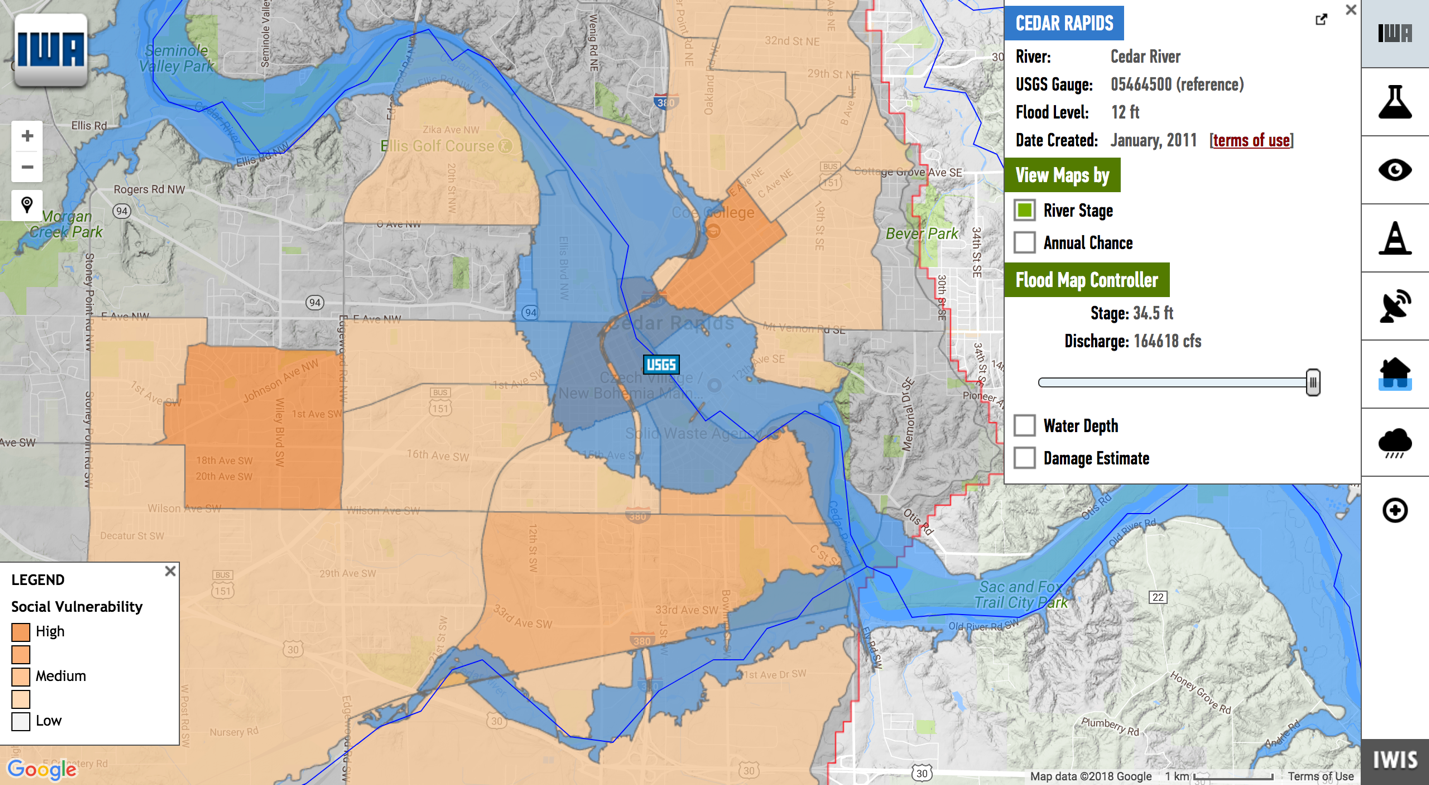Post submitted by Craig Just, assistant professor for the Department of Civil and Environmental Engineering at the University of Iowa and Ashlee Johannes, coordinator for the Iowa Watershed Approach Flood Resilience Program.
How can we become more flood resilient?
 Community resilience is a recent desire for communities that face a serious disruption in their routine. But, what is resilience? A resilient community is able to mitigate, prepare for, respond to, and recover from an adverse event, including floods. The Iowa Watershed Approach (IWA) Flood Resilience Team views resilience in terms of six “resources”—social, human, institutional, natural, economic, and physical. A community’s resilience depends on its capacities in each of these areas, as well as the engagement and unity of its citizens.
Community resilience is a recent desire for communities that face a serious disruption in their routine. But, what is resilience? A resilient community is able to mitigate, prepare for, respond to, and recover from an adverse event, including floods. The Iowa Watershed Approach (IWA) Flood Resilience Team views resilience in terms of six “resources”—social, human, institutional, natural, economic, and physical. A community’s resilience depends on its capacities in each of these areas, as well as the engagement and unity of its citizens.
During the first year of the IWA, the Flood Resilience Team trekked 10,000-miles, crisscrossing the state of Iowa and visiting diverse watershed communities to recognize their progress and understand their hurdles towards building a resilient community. In the process, our team observed a common resource that was missing in their actions: social resilience. Social resilience, at a community scale, is challenging to describe and quantify, so we have committed our focus to this topic. Our flood resilience programming has three goals that all strive towards improving social resources, and other resilience resources, for the IWA watersheds: 1) measure, visualize, and communicate flood resilience resources; 2) enhance flood resilience content in formal watershed plans; and 3) improve social resources of flood resilience.
A critical action for the Flood Resilience Team is the creation of interactive maps that display social vulnerability at the intersections of flood risk for each IWA watershed. With this information, watershed representatives can identify areas of high social vulnerability (or lower resilience). Furthermore, users will be able to pinpoint the underlying drivers of the vulnerable area (e.g., prominently low-income neighborhoods, people with disabilities, large children population) for targeted outreach and emergency response purposes. We will also empower community planners to use this information to implement flood mitigation strategies that protect socially vulnerable populations.

With assistance from IWA partners, the Flood Resilience Team is contributing to flood mitigation planning by connecting hazard mitigation and watershed plans to expand opportunities for other funding sources. To facilitate this process, damage and loss estimates to structures and their contents will be available online. This information, in addition to the social vulnerability maps, will be useful for emergency response, outreach, and planning purposes. To view the most recent version of these digital maps, visit: http://iwa.iowawis.org/.
Learn more about the IWA Flood Resilience Program at the Annual Iowa Water Conference on March 21-22 at the Scheman Building at Iowa State University in Ames. Lead presenter Ashlee Johannes will host a breakout session about the evolution of the flood resilience program and building a more resilient state.
Together, we can make our watershed communities more flood resilient. For more information about the IWA Flood Resilience Program, visit: http://www.iowawatershedapproach.org/programs/resilience/.
About the Authors:
Craig Just, PhD, is assistant professor for the Department of Civil and Environmental Engineering at the University of Iowa (UI). He is also an affiliate of the UI’s Water Sustainability Initiative. As the team leader of the Iowa Watershed Approach Flood Resilience Program, he develops and manages resilience programming actions and products.
Ashlee Johannes, MS, is the coordinator for the Iowa Watershed Approach Flood Resilience Program. She assists with product development, facilitates communication of the resilience programming activities, and fosters engagement with IWA watershed groups, partnering organizations, and other stakeholders.